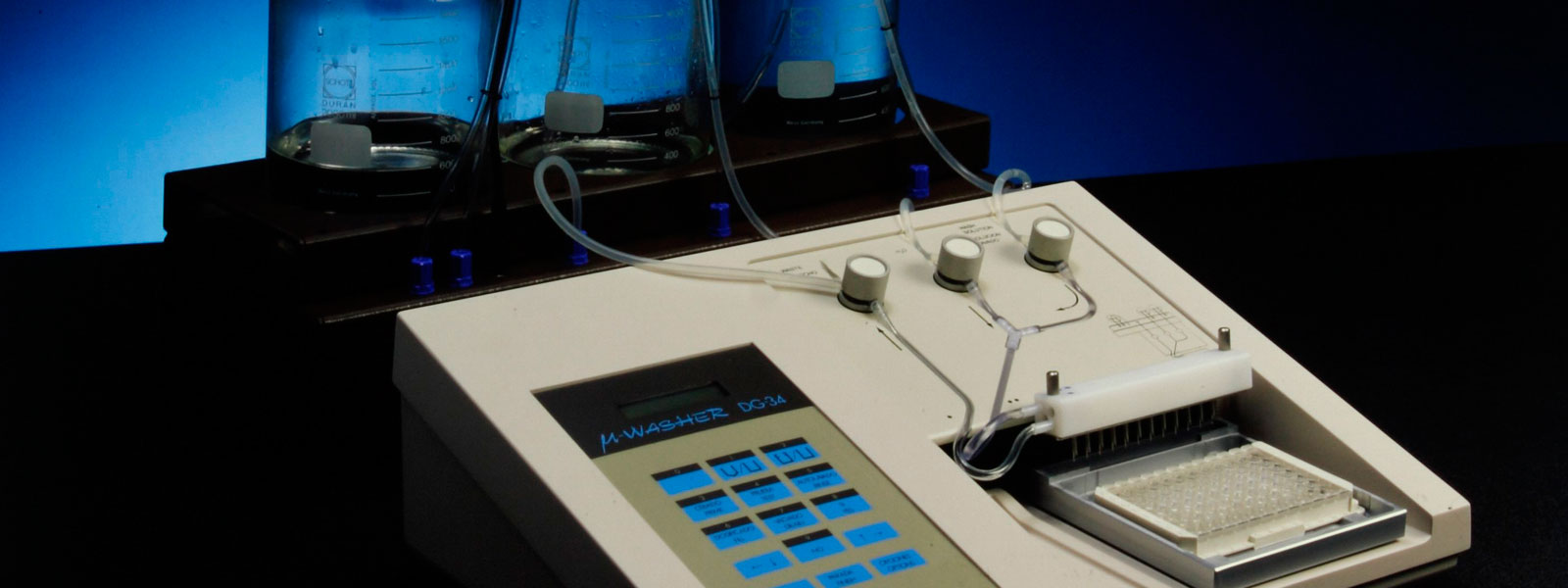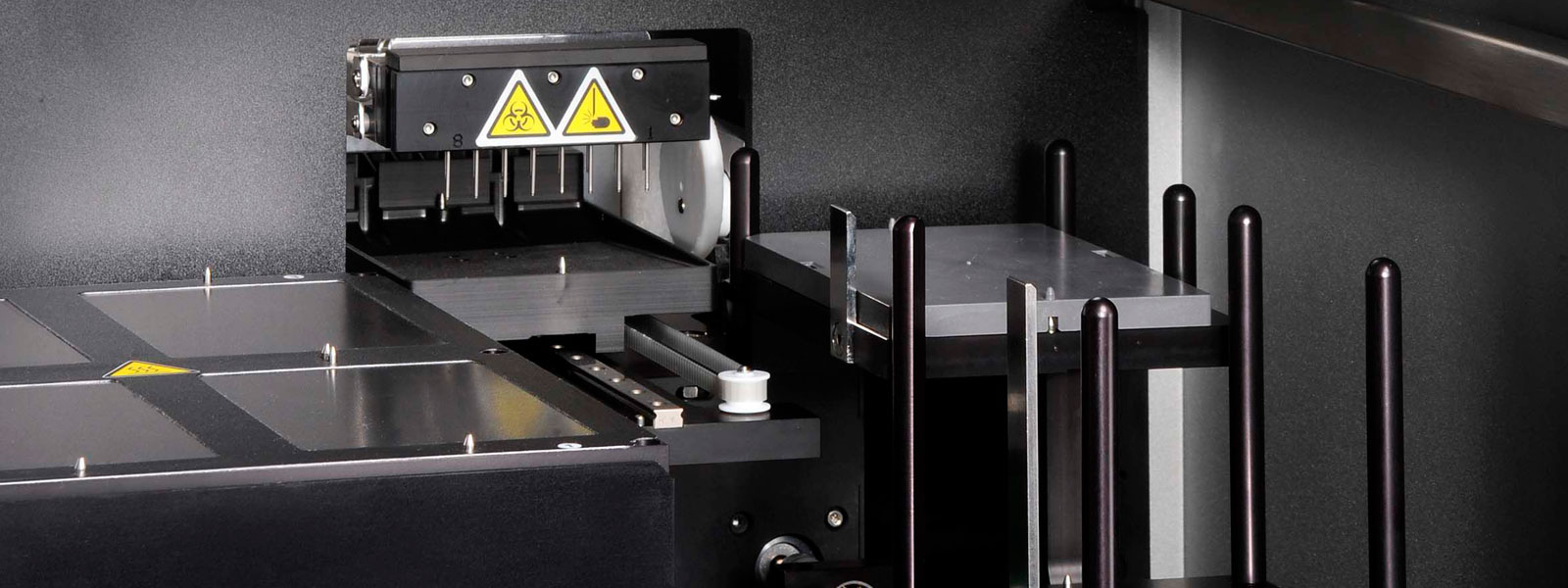Microtiter plate readers
Technology for application of immunochemical techniques
Technical file
Type of innovation: Device; System
Scope: Clinical Analysis
Innovation leader: Shared leadership
Year: 1989
Period: 1972-2002
Geographical scope: International
Economic impact: Medium
Level of innovation: Evolutionary
Patent: No
Interdisciplinary connections: -
Immunoassay
Immunoassay is the general term for a wide range of biochemical techniques used to test for immune responses. Some of the earliest of these involved the use of radioactive isotopes but concerns about the potential risk associated with such materials led to the search for alternatives.
The ELISA technique
One such alternative involved the use of enzymes. This technique is known as enzyme-linked immunoabsorbent assays or ELISA. This cheap, simple, effective technique is used in many laboratories to identify whether a given antibody or antigen is present in a patient's blood sample or other bodily fluid. Although the technique itself is relatively straightforward, it involves a large number of variables, such as reagent, temperature, sample volume, and time. These must be controlled accurately to produce reliable results.
“The automatic washer and the Triturus processor were designed from scratch by Diagnostic Grifols. These were complicated devices and incorporated a number of solutions to specific problems in their designs.”
Grifols and immunology
During the 1980s, Diagnostic Grifols distributed ELISA testing instrumentation produced by US companies such as DiaMedix. However, it was not long before Diagnostic Grifols began to design and manufacture its own microtiter plate equipment.
Dosititer DG-32
This was a dosing device for reagents for use in microplate wells. The advantages it offered included:
- speed – simultaneous dosing of up to 4 reagents on each plate
- customization – could be preprogrammed, with programs stored in memory
- efficient – minimized use of reagents
- precision
This device was a Diagnostic Grifols design and incorporated a major innovation with respect to its competitors: it could be programmed to dispense different combinations of reagent in each well.

Cromoterm DG-35
Based on the Dosititer, this device included microtiter temperature control and incorporated software for clot-based and chromogenic assays, thus exploiting to the full the flexibility offered by the Dosititer.
Triturus: automating ELISA techniques for microtiter plates
In 1990, Grifols launched a project with the aim of creating a processor that would automate some of the stages of the ELISA technique, but the project led to the creation of the Diana processor to automate blood typing.
It was not until 1996 that the Triturus automatic processor for ELISA techniques would be launched. The automatic washer and the Triturus processor were designed from scratch by Diagnostic Grifols. These were complicated devices and incorporated a number of solutions to specific problems in their designs. These included:
- washer head chambers designed to ensure perfect distribution of cleaning solution and prevent drips
- option of combining fixed and reusable point processors
- innovative user interface.

Related innovations
DEVICE
Photoelectric colorimeters and spectrophotometers